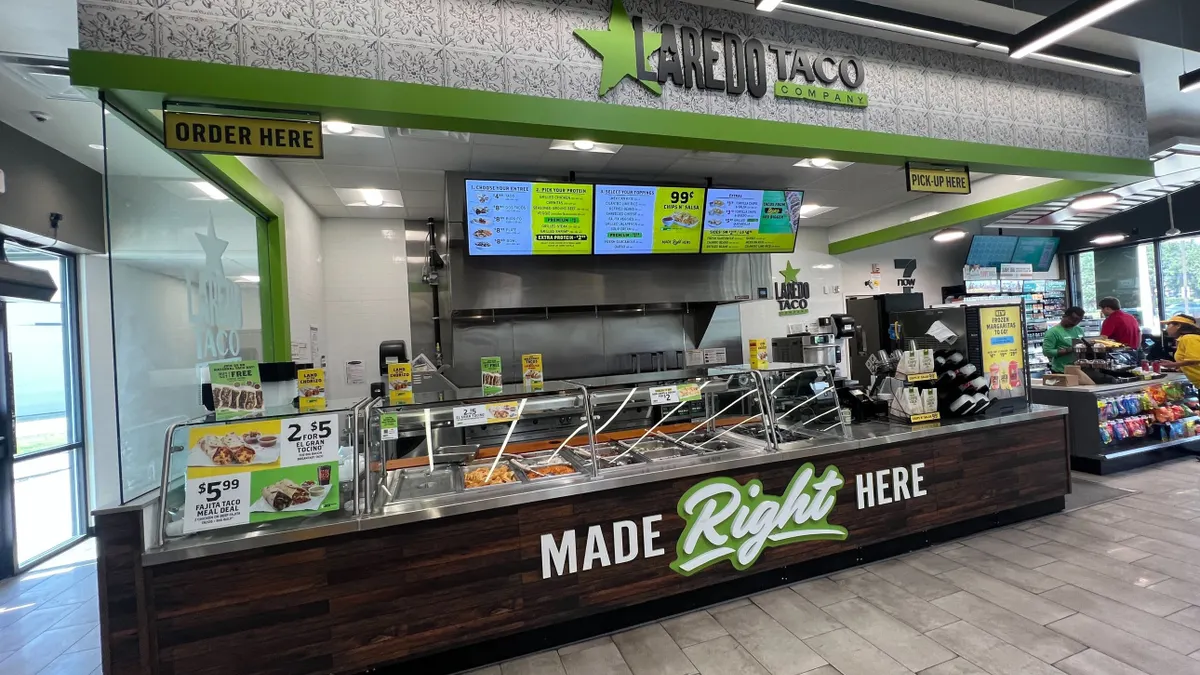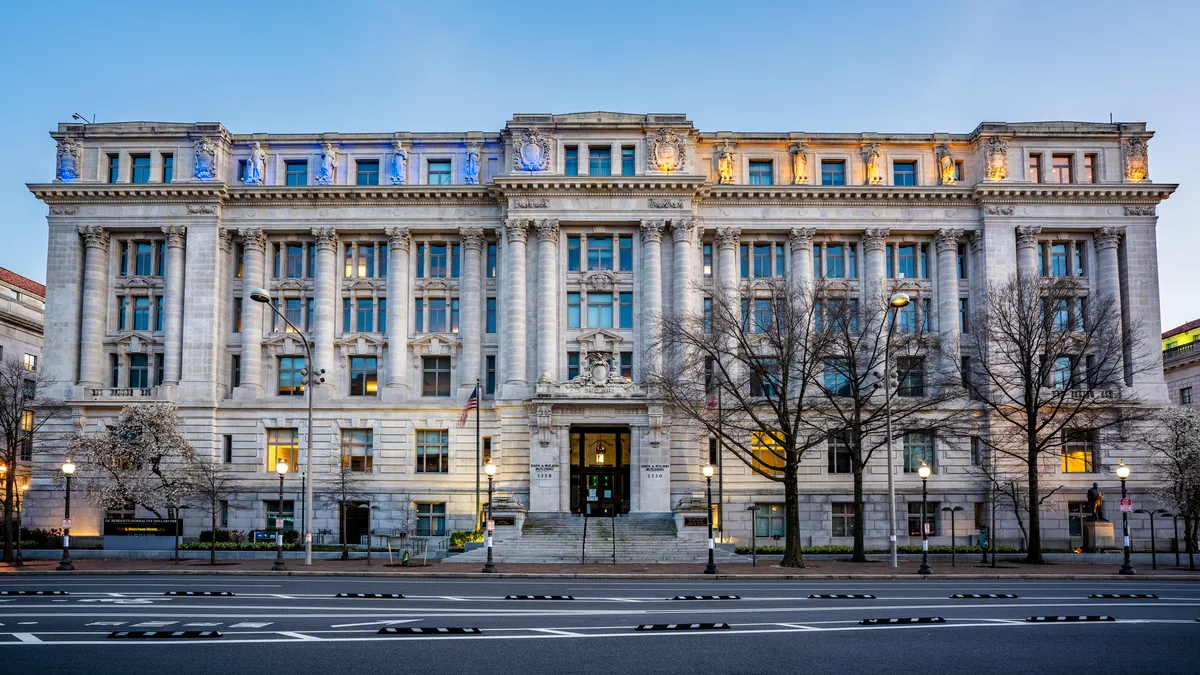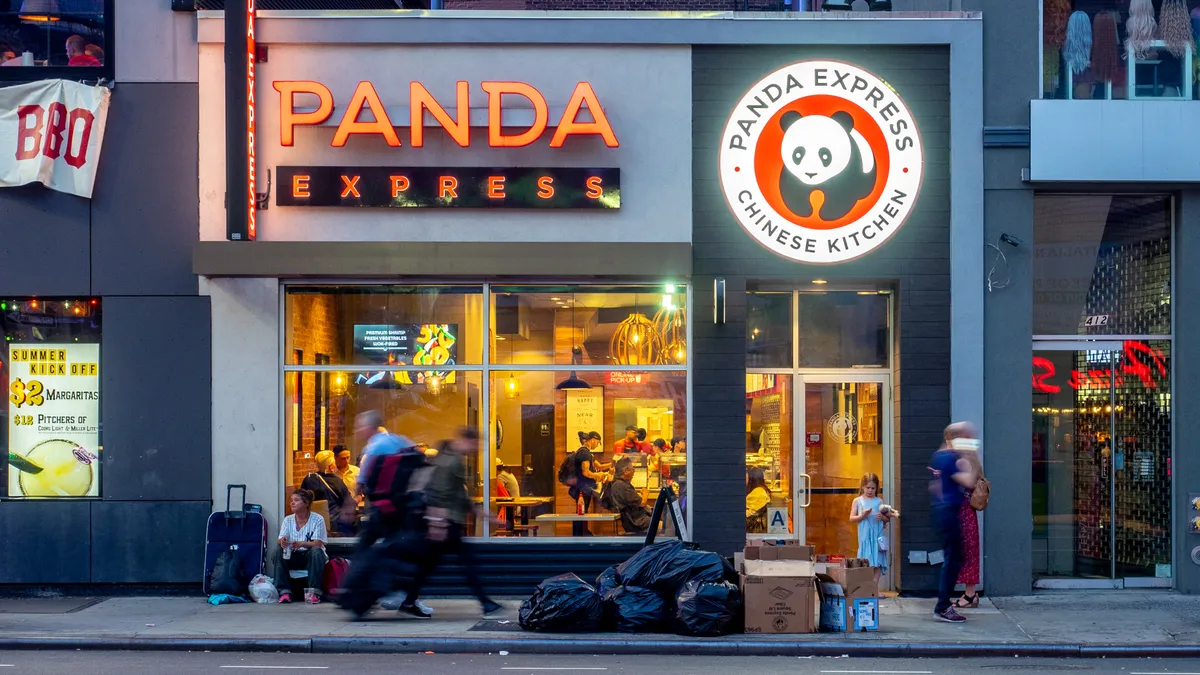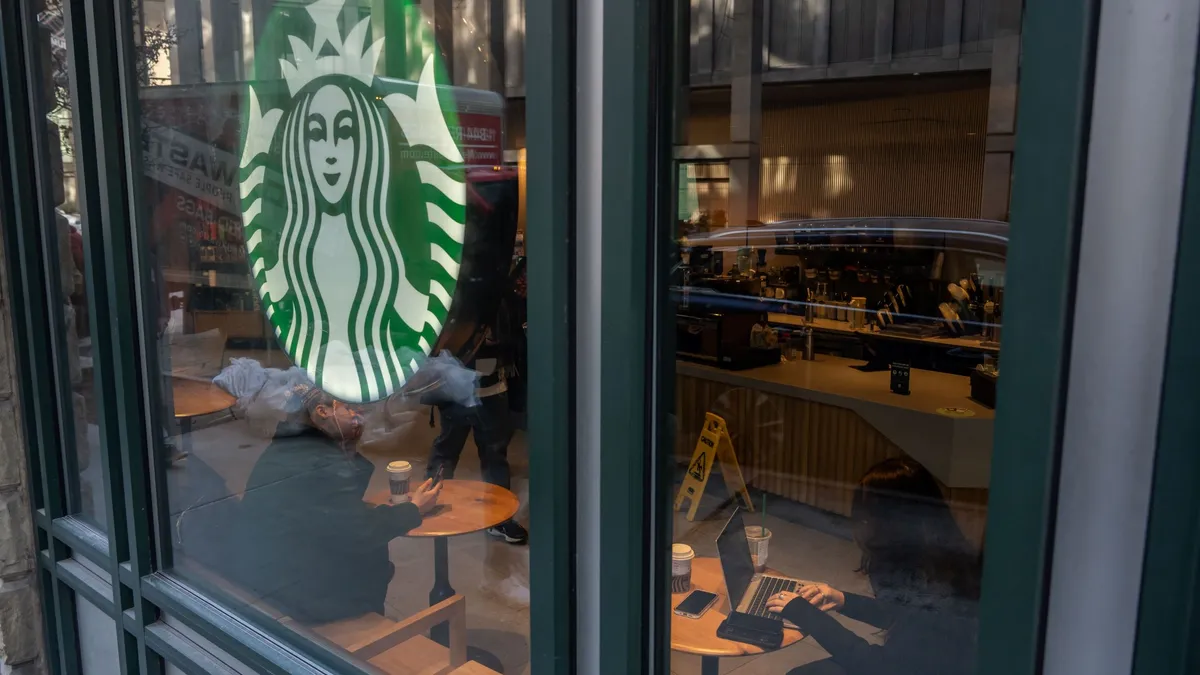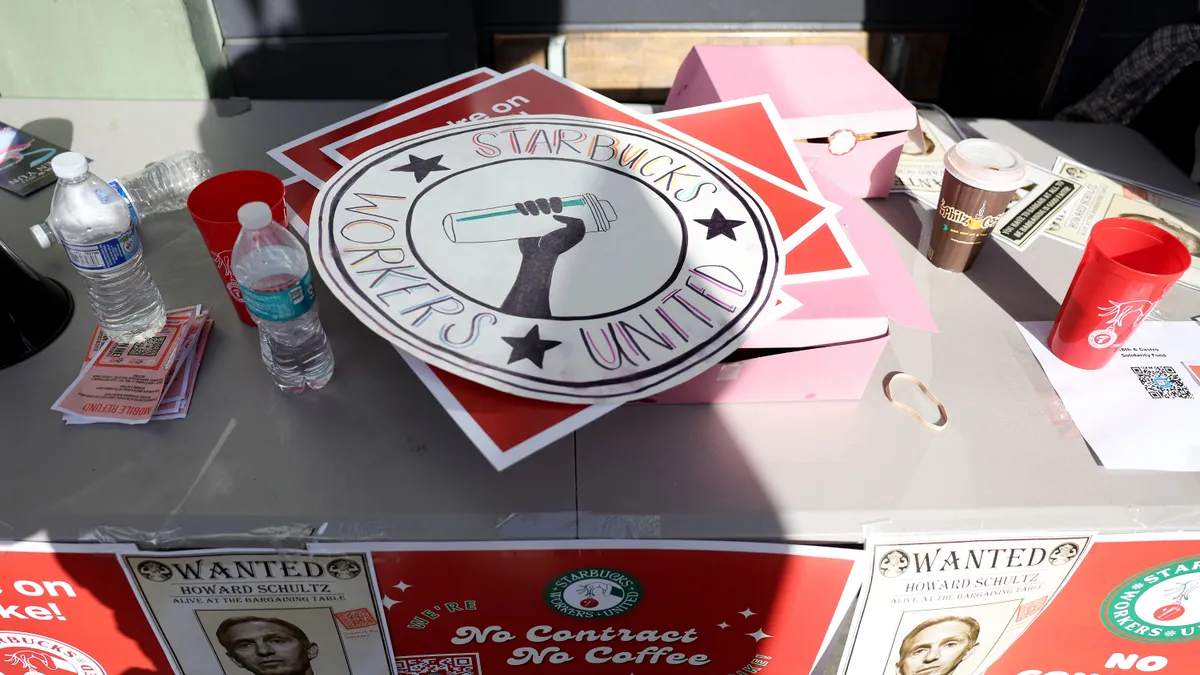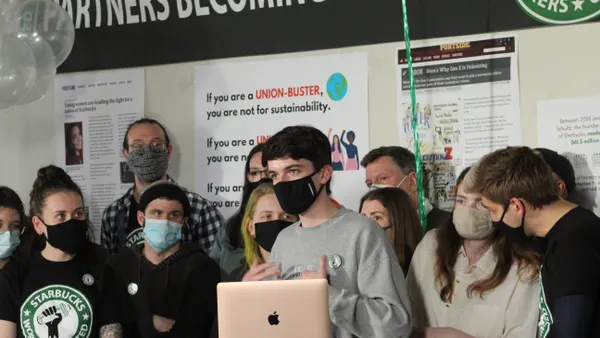Editor’s note: This article is part of an ongoing series exploring the political issues impacting restaurants and shaping the industry’s labor market. Interested in discussing restaurant politics? Email us at [email protected].
The conflicts over the fast food standards council and proposed changes to joint employer rules in California may be the most significant political issues impacting the restaurant industry, but they are not the only ones.
In Washington, D.C, the industry is rallying against the District’s second attempt to end the tip credit. On Capitol Hill, the National Restaurant Association wants to find a path toward reducing credit card swipe fees and increasing legal immigration, moves that would reduce transaction costs for restaurants and boost the supply of labor.
Sean Kennedy, EVP of public affairs for the NRA, discussed these issues with Restaurant Dive in the second part of our Q&A with him. The first part is available here.
Despite shortages of workers, rising costs of borrowing and other issues, Kennedy said, the outlook for restaurants remains positive.
“We’ve got a lot of headwinds and we have a lot of challenges,” Kennedy said. “But we're doing this with a renewed sense of purpose, and it makes it a great time to be in this industry.”
This interview has been edited for clarity and brevity.
RESTAURANT DIVE: Politically speaking, how does the industry want to address labor costs and labor supply issues in the next couple of years?
SEAN KENNEDY: There are some restaurants here in Washington, D.C., where the workers are making as much as $90,000 a year. I’m not suggesting that that’s the norm. Those restaurants have found a sweet spot of being successful and profitable enough, and where they value their employees enough, that those employees are probably not going to leave anytime soon.
Those employees are working in an environment where the restaurant’s supply costs are at an acceptable level. Where the quality of their product is at an acceptable level to bring people to pay top dollar for quality service and quality food. They are not looking for new regulations when it comes to wages.
That's one extreme. Let’s go to the other extreme.
Again, the restaurant industry as a whole is the least profitable of all small businesses. You have a 3% to 5% profit margin. When you see provisions on other issues that raise the cost of doing business for that restaurant to keep open, it means that you’re either going to have fewer employees, raise your prices for consumers or reduce the number of hours that you're open.
We don’t look at wages in isolation. We look at wage growth and the cost of labor within [the context of what] restaurants need from state, local and federal governments to operate more efficiently and profitably.
And what would you say are the big-ticket items in state or federal law?
KENNEDY: Number one, of course, would be the FAST Recovery Act.
If Restaurant A [a chain] is paying an arbitrarily higher wage than Restaurant B [an independent], for reasons that no one really understands, that’s going to make it harder on both restaurants. They’re both competing with each other, competing for workers, competing with each other on costs, and competing with each other for customers.
Number one is to make sure that there is consistency in how the restaurant industry is treated relative to other industries. If you’re going to raise the minimum wage, let’s be fair and let’s be honest about it, rather than single out one sector of one industry. Let’s have this conversation in a holistic way.
Beyond that are things like taxation, things like infrastructure, and the traditional items that represent the dividing line between a business that is barely profitable versus one that’s losing money.
What are some of the potential political solutions to issues facing restaurants?
KENNEDY: The need for comprehensive immigration reform. We are the industry of immigrants. It’s the back of the house. It's the front of the house. It's the owners. It’s the dish washers.
Immigration reform is an issue that is, unfortunately, almost hopelessly deadlocked politically here in Washington. There have been signs of progress. You had a bipartisan plan that was offered by Kyrsten Sinema (I-Ariz.), John Cornyn (R-Texas) and Tom Tillis (R-N.C.) that would have represented incremental improvements in immigration reform and incremental improvements in border security.
From what we heard of the plan, it looks like a great idea. But we are not going to fill the labor shortage in this country, without [immigration]. And it is one of our top three priorities.
When you look at immigration reform, what would be a win for restaurants?
KENNEDY: We have to be realistic. The National Restaurant Association feels that anything that increases the number of people entering this country legally for work through visa programs or asylum programs is a necessary first start.
It’s not meant to be a silver bullet for the labor challenges that we face in this country, but we are not going to get to where we need to be as a country with the immigration policies we have right now.
What are the Association’s other political priorities concerning the cost of labor?
Our third political priority is ensuring that restaurants can choose to offer the tip credit as a means of compensation. The biggest misconception people have about the tip credit is that people think that if the tipped wage is $2.18, a worker who works for one hour is getting $2.18, but they’re going to get the prevailing local wage [through tips added to the $2.18 minimum].
But what that $2.18 does is enable a restaurant or a bar to hire many more people. And those businesses are putting themselves on the line, they're assuming that the customers are going to come in, they're assuming those customers are going to tip.
If you eliminate the tip credit, as Washington, D.C. did with Initiative 82, restaurant operators will be concerned because they are suddenly going from paying their employees $2.18 an hour to $15 an hour. What are they going to do? If your labor costs are going to increase sevenfold, you could pass it on to consumers, which is a risky proposition.
Isn’t that what a tip is to begin with, passing labor costs on to consumers?
KENNEDY: Correct.
But if you are now paying that, how are you going to cover that? The popularity of service charges is about as popular as members of Congress from time to time. And people do not like seeing more things on their check; they want to see how much the meal is, and then decide the rest. We could move into a service-charge territory, but it’s not a great opportunity for the servers who are now just going to get a fixed wage, and they’re not going to get the advantages of tips.
Thirty-one percent of operators are telling us they are very concerned that they will shut their doors by 2027. And roughly 80% of restaurants in D.C. say they’re probably going to have to reduce their headcount with the elimination of the tip credit.
There are a few other labor markets in this country (Alaska, California, Minnesota, Montana, Nevada, Oregon and Washington) where the tip credit has been eliminated.
KENNEDY: What you see in those markets is that starting up a restaurant is an incredibly risky venture for obvious reasons. Are people going to eat fondue? Are people going to want to drink coffee, etc.? There’s much less new innovation in those restaurant[markets.
If you look at new restaurant growth in states like California that don’t have a tip credit, they’re absolutely at the bottom. So you have less choice overall. I’m not saying that the tip credit is the way to go. There are some restaurants that have eliminated the tip credit.
What we want to do is make sure restaurants have as many options for compensation models as possible. If you don’t do the tip credit, enjoy. Good luck.
But there are a lot of restaurants that are operating right now, they’re a fixture in their community, that are paying their folks a minimum of $2.18 an hour plus tips and a maximum of the minimum wage, and folks generally are doing far, far better, without any issues.
Is there anything else you think our readers should know about the state of the industry?
KENNEDY: Overall, this is a really exciting time for the restaurant industry.
Someone called their restaurant, their equivalent of the local church. And back in olden times, people would go to church, and that was their social outing. That’s where they would see everybody. And I’m sure there are restaurants in Columbia Heights or Dupont Circle that represent the same thing, where communities get together, and they see each other and they enjoy a meal together. And the pandemic really underscored that. What’s exciting for the industry right now is the newfound passion and appreciation that consumers have for it.
We’ve talked about a lot of gloom and doom, which is important when you’re operating on such tight margins, but the overall view when restaurant operators get together is really one of optimism.








